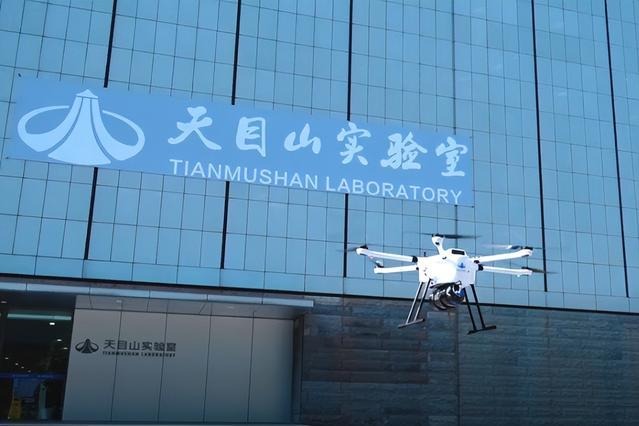Amer Sports CEO confident in strong 2025 growth, driven by China

Amer Sports Group, a Helsinki-based group that owns a number of iconic sports and outdoor brands, saw China lead its global business growth in 2024.
Amer Sports, partly owned by Chinese sportswear maker Anta Group, has a comprehensive portfolio of world-renowned brands like Arc'teryx, Salomon and Wilson.
In 2024, the Chinese market led its global growth with a 53.7 percent increase in sales, outperforming other regions. This success reflects an increasing demand for premium products and the value that consumers place on quality and innovation, the company said.
"The consumer behavior in China has evolved rapidly, particularly with Chinese consumers' increasing interest in outdoor and winter sports. In first-tier and second-tier cities, outdoor activities like skiing, hiking and running have become mainstream, driving strong demand for premium outdoor products," said James Zheng, board executive director and CEO of Amer Sports.
"This trend has been especially beneficial for brands like Arc'teryx, Salomon and Wilson. Our portfolio's strength lies in our ability to combine premium quality with technical performance, making the brands highly appealing to the growing premium segment in the Chinese market," Zheng said.
To stay relevant in China, Amer Sports has adapted its marketing and product strategies by focusing on local consumer preferences, offering cutting-edge products, and engaging with the community. Its continued investment in expanding retail presence and product innovation ensures the brands will thrive in this dynamic market.
In the fourth quarter of 2024, Amer Sports saw continued strong results in the Chinese market and the Asia-Pacific region, indicating its ability to meet ambitious goals and maintain growth momentum in 2025, the company said.
Flagship brand
The company's flagship brand Arc'teryx has been a key driver of this success, and information technology achieved impressive business growth with the direct-to-consumer model.
In China, Arc'teryx has distinguished itself as one of the top sporting goods brands, and it has been recognized for its strong productivity, profitability and retail execution.
"The fourth quarter was a great finish to a historic year for Amer Sports, with a strong performance across all segments and geographies. Led by Arc'teryx, our unique portfolio of premium technical brands continues to create white space and take market share with long growth runways still ahead," Zheng said.
"The DTC strategy has been a critical component of this growth, enabling us to engage directly with consumers, build stronger loyalty and enhance the shopping experience. Even with price sensitivity in the market, the value we provide in terms of product performance has been essential in sustaining strong demand," Zheng said.
Arc'teryx has been a standout example of the DTC transformation. Previously a wholesale-driven brand, it now generates approximately 70-75 percent of sales via DTC channels.
This shift has been propelled by consumer demand for personalized and direct shopping experiences.
Arc'teryx operated 176 brand stores globally in 2024, and it plans to expand to more than 500 stores in the future, reinforcing the company's commitment to DTC growth.
Market prospects
Given the strong sports and outdoor trend globally and the company's still underpenetrated brands, Zheng is confident that the company is well positioned to deliver strong results in 2025 and beyond.
Besides the growing interest of Chinese consumers in outdoor activities, the Chinese government has launched a group of favorable policies to support the sector.
By 2030, China aims to develop its outdoor sports sector and cultivate new economic growth points by building about 100 high-quality outdoor sporting venues and destinations, which will help promote national fitness and other related sectors, said a new guideline published by the National Development and Reform Commission and the General Administration of Sport of China in early February.
Amer Sports said as demand for outdoor sports continues to rise in China, particularly in first-tier and second-tier cities, the company's brands have resonated deeply with Chinese consumers who are seeking high-performance outdoor gear.
The group's brand Salomon is expanding its retail footprint and has opened a flagship store in the Xintiandi commercial area of Shanghai. By the end of 2024, the number of Salomon stores in China reached nearly 200, part of the brand's broader strategy to establish a strong retail presence in high-demand cities for premium outdoor products.
Meanwhile, Wilson plans to expand its Tennis 360 strategy in China to continuously drive the growth of footwear and apparel. The brand plans to introduce more performance rackets, accelerate the expansion of its Tennis 360 shops in China, and promote the growth of emerging sports such as padel and pickleball.
Lifestyle choices
Eyeing an increasing demand from health and wellness-conscious Chinese consumers, Amer Sports said it is confident that its brands will remain a key part of the lifestyle choices of Chinese consumers.
"As the outdoor market in China continues to grow, we remain committed to innovation, expecting the growth of soft goods and enhancing our market leadership in the equipment business. Even as price sensitivity remains a factor, our focus on premium quality and superior performance continues to resonate with consumers," Zheng said.
"We have built a wide network of diverse suppliers across the globe, and we are committed to investing in key markets like China to ensure we can meet the demand of local consumers," Zheng said.
He added that the outdoor sector, in particular, remains a major growth driver, and the group is confident that it will continue to capitalize on this trend.


Today's Top News
- China marks milestone in developing complex deepwater oil and gas reservoirs
- China remembers victims of Nanjing Massacre, 88 years on
- New plan will be a road map for a stronger future
- Taiwan's character of the year a vote against confrontation
- Strengthened resilience key for economy
- Video sheds new light on Japan's wartime atrocities






























